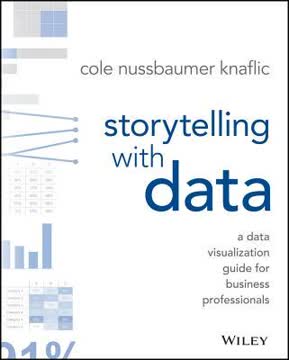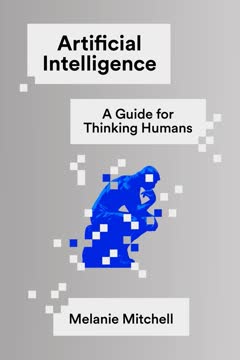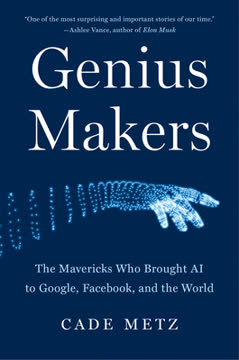Key Takeaways
1. AI's evolution: From early concepts to modern breakthroughs
"Artificial intelligence as we understand it today was born during the summer of 1956, in a low-key summer getaway at Dartmouth College in New Hampshire on the east coast of the United States."
Humble beginnings. The field of AI emerged from a small gathering of computer scientists at Dartmouth College in 1956. Their ambitious goal was to create machines that could use language, form abstractions, and improve themselves. While initial progress was slow, key concepts like neural networks were developed during this period.
Milestones and setbacks. AI experienced periods of excitement and disappointment, known as "AI winters." Early successes, such as expert systems in the 1980s, were followed by limitations in technology and funding cuts. The field regained momentum in the late 1990s with IBM's Deep Blue defeating chess champion Garry Kasparov, marking a significant turning point for AI's public perception and potential.
Modern resurgence. Since the turn of the millennium, AI has experienced exponential growth due to:
- Increased computational power
- Availability of massive datasets
- Breakthroughs in machine learning algorithms, particularly deep learning
- Investment from major tech companies and governments
2. Deep learning and big data fuel AI's rapid advancement
"Given these advances, it was no surprise that AI was breaking out from niche computer science departments to Silicon Valley."
Deep learning revolution. The resurgence of neural networks in the form of deep learning has been a game-changer for AI. These systems, inspired by the human brain's structure, can learn complex patterns from vast amounts of data. Key breakthroughs include:
- Image recognition systems that can identify objects with human-level accuracy
- Natural language processing models that can generate coherent text and translate between languages
- Reinforcement learning algorithms that can master complex games and tasks
Big data's role. The explosion of digital data has been crucial to AI's recent success:
- Billions of internet users generate massive amounts of data daily
- Smartphones, IoT devices, and sensors provide real-world data
- Companies and institutions have digitized vast troves of information
This abundance of data allows AI systems to train on diverse, real-world examples, improving their performance and applicability across various domains.
3. Computer vision and natural language processing lead AI applications
"Computer vision is much more than simply attaching a camera to a computer. Although we don't fully understand how the human brain processes and comprehends what we see, this field of AI tries to replicate the results."
Seeing machines. Computer vision enables AI systems to interpret and analyze visual information from the world around us. Applications include:
- Medical image analysis for disease detection
- Facial recognition for security and user authentication
- Autonomous vehicle navigation
- Quality control in manufacturing
- Augmented reality experiences
Language understanding. Natural language processing (NLP) allows machines to comprehend, generate, and manipulate human language. Recent advancements have led to:
- Sophisticated chatbots and virtual assistants
- Improved machine translation services
- Text summarization and content generation
- Sentiment analysis for social media monitoring
- Voice recognition and text-to-speech systems
These technologies are rapidly improving and finding applications across industries, from healthcare and finance to entertainment and customer service.
4. Self-driving cars: A complex frontier of AI development
"Autonomous vehicles are robotic systems, and any robotic system has three major stages. The first stage is sensing, the second is planning, the third is acting."
Technological challenges. Self-driving cars represent one of the most ambitious and complex applications of AI. They require the integration of multiple AI technologies:
- Computer vision for object detection and road sign recognition
- Sensor fusion to combine data from cameras, lidar, and radar
- Decision-making algorithms for navigation and obstacle avoidance
- Natural language processing for user interaction
Current state. While fully autonomous vehicles are not yet widely available, significant progress has been made:
- Many modern cars feature semi-autonomous capabilities like lane-keeping and adaptive cruise control
- Companies like Waymo have deployed limited autonomous taxi services in controlled environments
- Ongoing research and development aim to improve safety and reliability in diverse driving conditions
Societal impact. The widespread adoption of self-driving cars could lead to:
- Reduced traffic accidents and fatalities
- Increased mobility for elderly and disabled individuals
- Changes in urban planning and transportation infrastructure
- Disruption of industries like trucking and taxi services
5. AI's pitfalls: Bias, surveillance, and deepfakes pose societal risks
"Bad data put into a system results in bad data outputs."
Algorithmic bias. AI systems can perpetuate and amplify existing societal biases:
- Facial recognition systems showing lower accuracy for certain ethnic groups
- Hiring algorithms discriminating against women or minorities
- Predictive policing tools reinforcing racial profiling
Privacy concerns. The widespread use of AI in surveillance raises ethical questions:
- Facial recognition in public spaces
- Social media monitoring by governments
- Data collection and profiling by companies
Deepfakes and misinformation. AI-generated synthetic media poses new challenges:
- Creation of convincing fake videos and audio
- Potential for political manipulation and fraud
- Erosion of trust in digital content
Addressing these issues requires a combination of technical solutions, ethical guidelines, and regulatory frameworks to ensure AI is developed and deployed responsibly.
6. The AI workforce challenge: Lack of diversity hinders progress
"What really matters at the end of the day is who is building and shaping the AI system."
Homogeneous workforce. The AI industry suffers from a significant lack of diversity:
- Predominantly white and male workforce
- Underrepresentation of women, people of color, and other minorities
- Limited geographic diversity, with most development concentrated in a few tech hubs
Consequences of homogeneity:
- Perpetuation of biases in AI systems
- Blindspots in identifying potential negative impacts
- Missed opportunities for innovation and problem-solving
Addressing the issue. Efforts to increase diversity in AI include:
- Outreach programs to underrepresented groups
- Scholarships and mentorship initiatives
- Calls for greater transparency in hiring and promotion practices
- Emphasis on interdisciplinary approaches to AI development
Diversifying the AI workforce is crucial for creating more inclusive and effective AI systems that benefit all of society.
7. Accountability and transparency: Keys to responsible AI development
"Currently we cannot say which local authorities in the UK, for instance, are using an algorithmic decision system to inform prioritisation in children's social care."
Need for transparency. As AI systems increasingly impact critical aspects of our lives, there's a growing demand for transparency in their development and deployment:
- Explainable AI: Making AI decision-making processes understandable to humans
- Algorithmic audits: Regular assessments of AI systems for bias and fairness
- Public registers: Documenting the use of AI in government and public services
Regulatory approaches. Governments and organizations are exploring ways to ensure responsible AI development:
- EU's proposed AI regulations focusing on high-risk applications
- Calls for AI ethics boards and guidelines
- Discussions around AI-specific laws and standards
Industry initiatives. Tech companies and research institutions are also taking steps:
- Development of tools for AI fairness and interpretability
- Voluntary commitments to ethical AI principles
- Collaboration with policymakers and civil society groups
Balancing innovation with accountability will be crucial for maintaining public trust in AI technologies.
8. The future of AI: Balancing potential and ethical considerations
"AI is already transforming and disrupting the world around us. It's throwing up all sorts of challenges. There are ethical, societal and technical issues that need fixing with the systems we have right now."
Continued advancement. AI is expected to progress rapidly in the coming years:
- Improved natural language understanding and generation
- More sophisticated computer vision and robotics
- Advances in unsupervised and reinforcement learning
- Integration of AI with other emerging technologies like quantum computing
Societal impact. The widespread adoption of AI will likely lead to:
- Transformation of job markets and required skills
- Changes in healthcare delivery and personalized medicine
- Shifts in education and lifelong learning
- New paradigms for human-computer interaction
Ethical considerations. As AI becomes more powerful, addressing ethical concerns becomes increasingly important:
- Ensuring AI alignment with human values
- Protecting privacy and individual rights
- Managing the economic impacts of automation
- Preventing the weaponization of AI
The future of AI holds immense promise, but realizing its full potential while mitigating risks will require ongoing collaboration between technologists, policymakers, and the public.
Last updated:
FAQ
1. What is "Artificial Intelligence (WIRED guides): How Machine Learning Will Shape the Next Decade" by Matt Burgess about?
- Comprehensive AI Overview: The book provides a clear, accessible introduction to artificial intelligence (AI) and machine learning, tracing their history, current applications, and future potential.
- Societal Impact Focus: It explores how AI is already embedded in daily life, from social media feeds to healthcare, and examines its growing influence on business, society, and individuals.
- Balanced Perspective: Burgess discusses both the benefits and pitfalls of AI, including issues of bias, surveillance, and ethical concerns.
- Forward-Looking Analysis: The book looks ahead to the next decade, considering how AI might reshape work, governance, and even global power structures.
2. Why should I read "Artificial Intelligence (WIRED guides): How Machine Learning Will Shape the Next Decade" by Matt Burgess?
- Accessible for All Readers: The book is written for a general audience, making complex AI concepts understandable without requiring technical expertise.
- Current and Relevant: It addresses the most pressing questions about AI’s role in society, including real-world examples and up-to-date research.
- Critical and Nuanced: Burgess doesn’t shy away from AI’s challenges, such as bias, lack of diversity, and ethical dilemmas, offering a well-rounded view.
- Practical Insights: Readers gain a sense of how AI will affect their lives and work, and what to watch for as the technology evolves.
3. What are the key takeaways from "Artificial Intelligence (WIRED guides): How Machine Learning Will Shape the Next Decade"?
- AI Is Ubiquitous and Growing: AI is already deeply integrated into everyday life and is set to become even more pervasive and powerful.
- Opportunities and Risks: While AI offers efficiency, innovation, and new capabilities, it also brings risks like bias, surveillance, and job disruption.
- Human-Centric Design Needed: Successful AI deployment requires considering human needs, transparency, and accountability, not just technical accuracy.
- Global and Ethical Implications: The future of AI will be shaped by international competition, regulation, and the need for diverse, inclusive development.
4. How does Matt Burgess define artificial intelligence and its key concepts in the book?
- Intelligence as Goal Achievement: AI is defined as an agent’s ability to achieve goals across a range of environments, echoing definitions by researchers like Shane Legg and Marcus Hutter.
- Narrow vs. General Intelligence: The book distinguishes between narrow AI (specialized in one task) and artificial general intelligence (AGI), which would match or surpass human capabilities across domains.
- Core Concepts Explained: Key terms such as neural networks, deep learning, supervised/unsupervised learning, reinforcement learning, and natural language processing are clearly defined and contextualized.
- Human vs. Machine Intelligence: Burgess discusses the challenges of comparing machine intelligence to human intelligence, noting cultural, historical, and ethical complexities.
5. What are the most significant historical milestones in AI development according to the book?
- Dartmouth Conference (1956): The birth of AI as a field, where the term "artificial intelligence" was coined.
- Early Neural Networks: The creation of the Perceptron and MADALINE, foundational models for modern neural networks.
- AI Winters: Periods of stagnation in the 1970s and 1980s due to unmet expectations and technical limitations.
- Breakthroughs in Games: IBM’s Deep Blue defeating Garry Kasparov in chess (1997) and DeepMind’s AlphaGo beating the world Go champion (2016) as pivotal moments.
- Recent Advances: The rise of deep learning, big data, and powerful hardware, leading to rapid progress in image recognition, language processing, and real-world applications.
6. How does "Artificial Intelligence (WIRED guides)" explain the main types of machine learning and their applications?
- Supervised Learning: Systems are trained on labeled data to make predictions or classifications, widely used in image recognition and medical diagnosis.
- Unsupervised Learning: Algorithms find patterns in unlabeled data, useful for clustering and discovering hidden structures, as seen in early Google experiments.
- Reinforcement Learning: AI learns by trial and error, receiving rewards for achieving goals, exemplified by AlphaGo and self-driving cars.
- Deep Learning: Utilizes multi-layered neural networks to process vast amounts of data, powering breakthroughs in computer vision and natural language processing.
7. What are the most impactful current applications of AI described in the book?
- Everyday Technology: AI powers social media feeds, recommendation systems (Netflix, Amazon), voice assistants (Alexa, Siri), and search engines.
- Healthcare: AI aids in medical imaging, early disease detection, and drug discovery, sometimes outperforming human experts in specific tasks.
- Autonomous Vehicles: Self-driving cars use AI for perception, planning, and decision-making, though full autonomy remains a work in progress.
- Natural Language Processing: Advanced models like GPT-3 generate human-like text, translate languages, and automate customer service.
- Retail and Logistics: AI optimizes warehouse operations, delivery routes, and even cashier-less stores.
8. What are the main risks and pitfalls of AI highlighted by Matt Burgess?
- Bias and Discrimination: AI systems can perpetuate or amplify existing social biases, especially when trained on unrepresentative or prejudiced data.
- Surveillance and Privacy: Facial recognition and other AI-driven surveillance tools raise significant civil liberties and privacy concerns.
- Deepfakes and Misinformation: AI-generated synthetic media can be used for malicious purposes, including fake news, fraud, and harassment.
- Lack of Transparency: Many AI systems are "black boxes," making it difficult to understand or challenge their decisions.
- Job Disruption: Automation threatens certain jobs, especially those involving repetitive or data-focused tasks, though new roles may also emerge.
9. How does "Artificial Intelligence (WIRED guides)" address the issue of bias and diversity in AI?
- Data Bias: The book details how biased training data leads to unfair outcomes in areas like policing, healthcare, and hiring.
- Lack of Diversity in AI Workforce: Most AI is developed by a homogenous group (predominantly white men), which can skew design and priorities.
- Case Studies: Examples include flawed visa and exam algorithms, biased facial recognition, and discriminatory risk assessment tools.
- Calls for Inclusion: Burgess advocates for more diverse teams, inclusive design, and involvement of affected communities in AI development.
10. What does the book say about AI accountability, transparency, and regulation?
- Need for Auditing: Regular, structured audits (like Joy Buolamwini’s "Gender Shades" study) are essential to identify and correct bias.
- Transparency Initiatives: Some cities and governments are creating algorithm registers and charters to increase openness about AI use.
- Regulatory Approaches: The book discusses the EU’s efforts to regulate high-risk AI and the debate over whether new laws are needed.
- Corporate Responsibility: Tech companies are urged to publish workforce data, address pay gaps, and ensure ethical oversight at all stages of AI development.
11. How does Matt Burgess envision the future of AI and the path toward artificial general intelligence (AGI)?
- AGI Remains Distant: Most experts believe AGI—AI matching human-level intelligence—is decades away, with estimates ranging from 30 to 75 years.
- Incremental Progress: The likely future is a gradual expansion of AI’s capabilities, with systems becoming more general but not fully human-like.
- Ethical and Practical Challenges: The book stresses the importance of considering not just what AI can do, but what it should do, emphasizing human benefit and safety.
- Ongoing Responsibility: Developers and policymakers must focus on making current AI systems fair, transparent, and beneficial, rather than being distracted by AGI hype.
12. What are the best quotes from "Artificial Intelligence (WIRED guides)" by Matt Burgess and what do they mean?
- "AI can be a huge force for good – it has already changed the world in profound ways. But the next decade will be crucial in determining how far that change will go, and the extent to which it will ultimately be a benefit to society."
This highlights the book’s central message: AI’s impact is profound, but its future depends on choices made now about its development and governance. - "Bad data put into a system results in bad data outputs."
A succinct warning about the dangers of biased or flawed data in AI systems, emphasizing the need for careful data curation. - "The technology will become plug-and-play. By that point we may hardly notice its interaction with our daily lives."
Burgess predicts that AI will become so integrated and user-friendly that it will fade into the background of everyday experience. - "What really matters at the end of the day is who is building and shaping the AI system."
A call for diversity and inclusion in AI development, recognizing that creators’ backgrounds shape technology’s outcomes. - "The basic attitude should be that technology should improve the human condition, and not replace humans."
A guiding principle for ethical AI, urging that technology serve humanity rather than supplant it.
Review Summary
Artificial Intelligence receives mixed reviews, with an average rating of 3.72/5. Readers appreciate its concise and informative nature, praising the overview of AI applications, ethical considerations, and future implications. Some find it an excellent introduction for beginners, while others consider it too basic. The book is commended for its clarity, practical approach, and discussion of governance and accountability. Critics suggest it lacks depth and complexity compared to other works on the subject. Overall, it's seen as a useful primer on AI, particularly for those new to the field.
Similar Books










Download PDF
Download EPUB
.epub digital book format is ideal for reading ebooks on phones, tablets, and e-readers.




